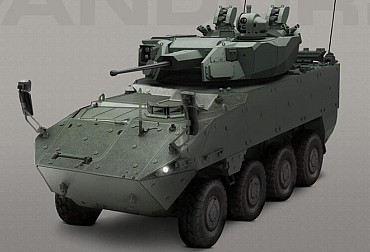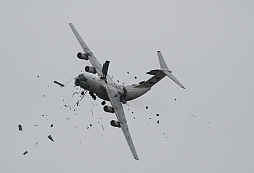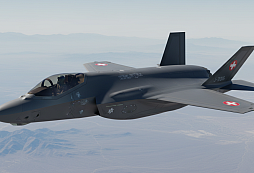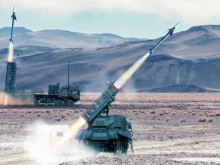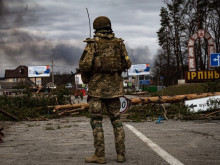Unmanned aerial vehicles for the Czech Armed Forces and experience from the war in Ukraine
In the war in Ukraine, we can observe a rather extensive use of unmanned aerial vehicles, of various categories, from which the Czech army (not only) can draw valuable lessons on what kind of unmanned aerial vehicles to acquire and how to use them most effectively.
UAVs are deployed extensively in Ukraine by both sides of the conflict. Both Russia and Ukraine primarily use smaller drones with lower payloads and shorter ranges. The exceptions are the Turkish Bayraktar TB-2 drones used by Ukraine and the Iranian Mojaher-6 drones used by Russia. In the first case, the effective use of these assets occurred mainly at the beginning of the war, while in the later stages of the conflict the Russian electronic warfare and air defence forces succeeded in shooting down these machines. As far as Mojaher-6 assets are concerned, its extensive deployment cannot be unequivocally confirmed to have had a significant impact on the results of combat operations.
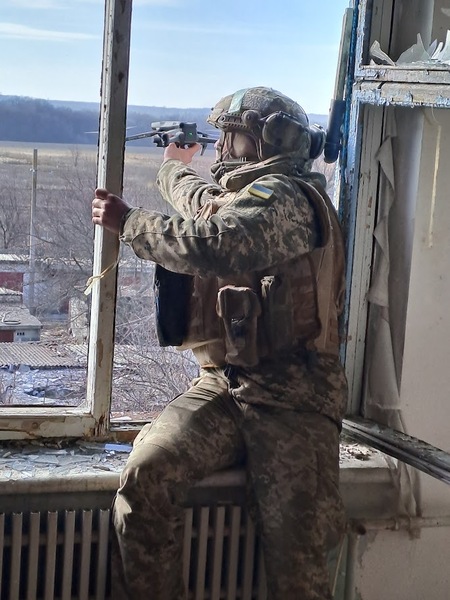
Picture: In the war in Ukraine, we can observe a rather extensive use of unmanned aerial vehicles of various categories. In the photo, a Ukrainian soldier sends a drone near Bakhmut | Matyas Zrno
An analysis by the think tank RUSI (Royal United Service Institute) released in early November last year states that both sides have so far used mostly small UAVs. Russian forces have then frequently used Orlan-10 drones to detect Ukrainian air defence assets and subsequently suppress them with anti-radar missiles or electronic warfare assets. The most recent analysis by the aforementioned think tank in May of this year, then, puts Ukrainian drone losses at around 10,000 per month. Given that Ukrainian forces overwhelmingly use commercially available UAVs, such high losses are hardly surprising. Most of these losses are attributable to Russian electronic warfare units, which remain an important part of Russian forces. According to the above-mentioned analysis, Russian forces deploy one major electronic warfare system per 10 km of frontline.
Another part of the analysis concerns Russian air defence assets. According to the document, these have significantly improved and increased their effectiveness in defending point targets. They are now capable of shooting down most HARM (High-speed Anti-Radiation Missile) missiles and a significant number of GMLRS (Guided Multiple Launch Rocket System) missiles. Long-range air defence assets are also performing very well according to the analysis, with the longest kill recorded at 150 km. The Russian Air Force is not lagging behind and uses R-37 air-to-air missiles mounted on Su-35S aircraft in its air patrols. The longest kill by an R-37 missile was recorded at 177 km.
Lessons from the Ukrainian battlefield not only for the Czech Army
Russian electronic warfare and air defence units are an important part of the Russian army and are very effective against Ukrainian drones, so attention should be focused on these areas so that in a potential conflict these forces can be neutralised by, among other things, the effective deployment of unmanned aerial vehicles.
The big unknown is the deployment of commercially available drones. The footage of their deployment in Ukraine looks spectacular, but their losses are enormous. Another problematic aspect of these machines is the fact that the US Department of Defence banned the use of machines originating from China several years ago because of suspicions of possible leaks of sensitive data.
As far as larger unmanned vehicles are concerned, the Bayraktar has proved its worth, especially in the first weeks of the war in Ukraine, due to the absence of Russian electronic warfare and air defence units to cover the advancing mechanised forces. This situation corresponds to the experience of the Nagorno-Karabakh war. When the Russian forces were subsequently regrouped and reinforced at the front, the effectiveness of the Bayraktars began to decline significantly. Today, according to Samuel Bendett, a researcher at the US Center for Naval Analysis, Bayraktars have virtually disappeared from the battlefield and are sporadically used only for reconnaissance and to guide other drones away from Russian electronic warfare and air defense assets.
From the above, it is clear that the focus should be on sophisticated jamming-resistant drones that are also capable of launching missiles at longer ranges to avoid the pitfalls of Russian air defenses. A certain alternative or complement, then, may be large quantities of cheap standby munitions that can overwhelm Russian air defense and electronic warfare assets and possibly open the way for more sophisticated means of destroying them.
It is based on lessons learned from the current Ukrainian battlefield that the military has decided to reorder its purchases of unmanned systems, first acquiring over 200 smaller drones instead of three medium tactical drones, ranging from small quadcopters to 20-kilogram long endurance assets. The originally planned medium tactical drones will be acquired afterwards.
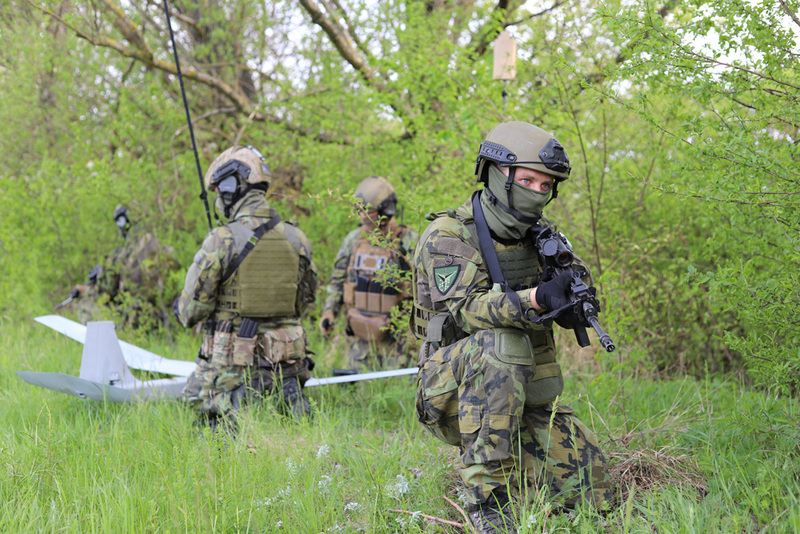 Picture: It was based on the findings from the current Ukrainian battlefield that the army decided to change the order of unmanned systems purchases, first acquiring over 200 smaller drones instead of three medium tactical drones | 533rd prBS
Picture: It was based on the findings from the current Ukrainian battlefield that the army decided to change the order of unmanned systems purchases, first acquiring over 200 smaller drones instead of three medium tactical drones | 533rd prBS
The army plans to equip the 4th Rapid Deployment Brigade, the 7th Mechanised Brigade and the 43rd Airborne Regiment with smaller drones. These assets will also be available to reconnaissance units and units of other types of forces in order to maximise the combat capabilities of the Czech Army's brigade task forces.
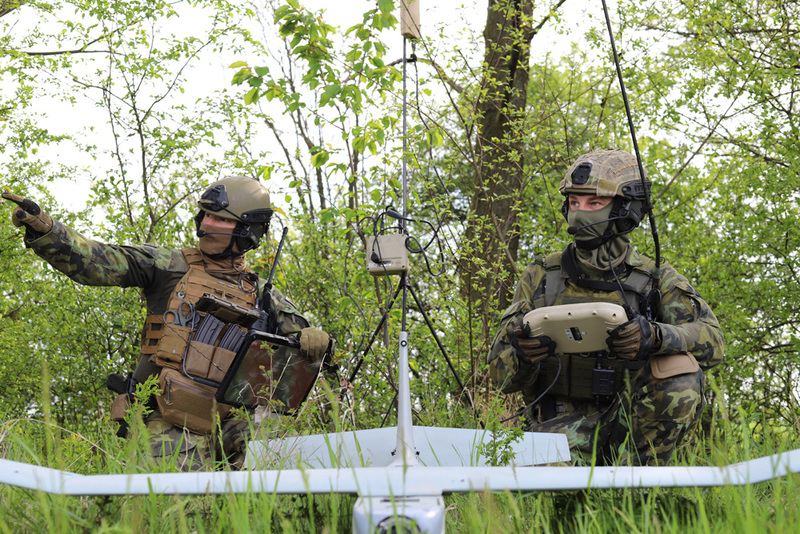 Picture: The army plans to equip the 4th Rapid Deployment Brigade, 7th Mechanised Brigade and 43rd Airborne Regiment with smaller drones | 533. prBS
Picture: The army plans to equip the 4th Rapid Deployment Brigade, 7th Mechanised Brigade and 43rd Airborne Regiment with smaller drones | 533. prBS
"However, it should be kept in mind that drones of the micro and mini category can never replace medium tactical drones and vice versa. They are different assets," said Brigadier General Hyťha, Director of the Intelligence Security Section of the MoD.
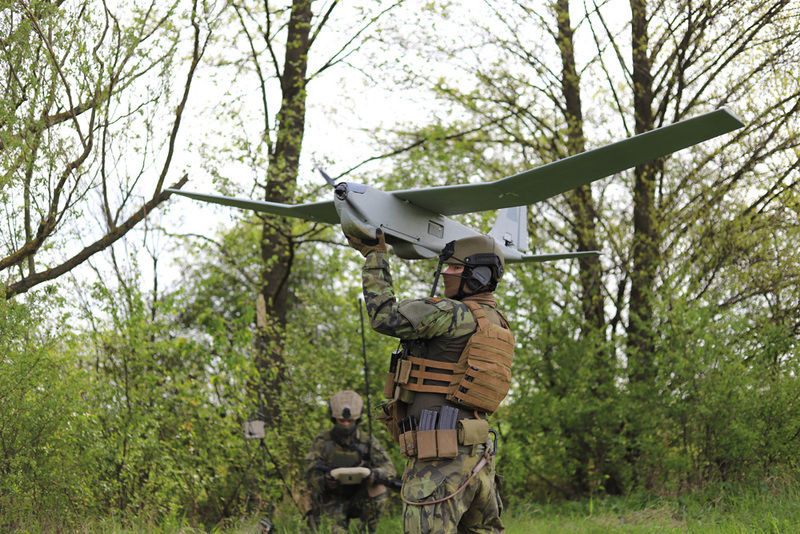 Picture: It should be remembered that drones of the micro and mini category can never replace medium tactical drones and vice versa, says Brigadier General Hyťha. | 533. prBS
Picture: It should be remembered that drones of the micro and mini category can never replace medium tactical drones and vice versa, says Brigadier General Hyťha. | 533. prBS
Regarding the use of drones on modern battlefields, we also recently spoke with Col. Peter Manda, commander of the 533rd Unmanned Systems Battalion.
















